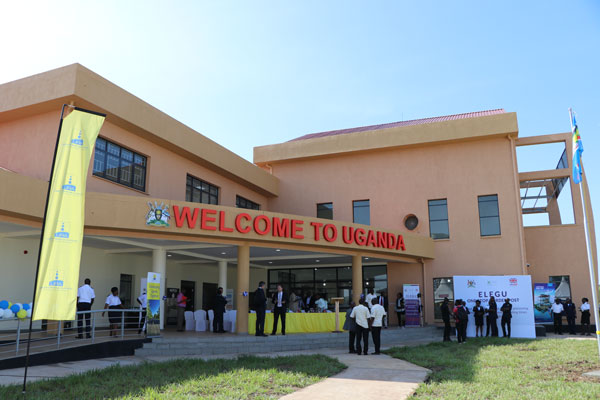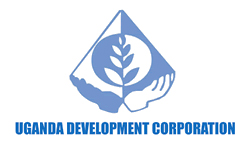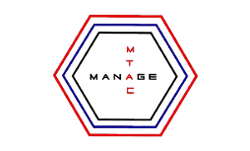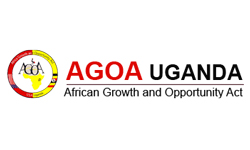Press Release One Stop Border Post, Geneva

On 12 July 2017, the Delegation of Uganda to the World Trade Organisation in partnership with Trade Mark East Africa (TMEA) hosted a side event on Trade Facilitation on the side lines of the Sixth Global Review of Aid For Trade. The objective of this session was to show the extent to which Uganda with the support of TMEA had undertaken deliberate and strategic moves to ease the cost of doing business. The Hon Amelia Anne Kyambadde, Minister of Trade, Industry and Cooperatives together with Mr. Frank Matsaert, Chief Executive Officer of TMEA were on the panel to show case the One Stop Boarder Post (OSBP) in Busia. A live link connection was done to feed directly into the panel discussion to an audience of over 500 trade facilitation enthusiasts.
A video highlighting the OSBP processes at Busia was showcased. The three-minute video highlighted: the One Stop Border Post; the Authorised Economic Operator (AEO) Scheme; and the Regional Electronic Cargo Tracking System.
During the discussion, the Hon Kyambadde fielded several questions moderated by Mr. Matsaert on why the OSBP; the challenges that obtained before; and the benefits of the OSBP in terms of cost reductions with regard to movement of cargo and clearance of goods.
Mr. Matsaert observed that TMEA’s efforts to facilitate trade in East Africa had focused on removing bottlenecks and improving efficiency along the main transport arteries. He noted that, after the ports, the biggest “choke points” for trade and transport along these arteries had been border crossings. Together with the Governments in the region TMEA had worked on building and making operational seven (7) OSBPs. The second busiest of these border crossings is Busia along the Northern Corridor between Kenya and Uganda, which handles over 500 trucks every day.
Mr. Richard Kamajugo, Senior Director, Enabling Trade Environment, TMEA was oon hand broadcasting live from Busia in providing clinical details on what constitutes an OSBP. He explained that a one-stop border post is where trucks stop once, and not, twice. All procedures are handled in a streamlined manner. He added that many of East Africa’s border posts suffered from poor infrastructure and lengthy procedures, so combining upgrading of the physical infrastructure with integrating trade procedures had been key to reducing time taken for goods, and people to cross borders.
The Hon Minister indicated that before the OSBP was built there were massive queues of trucks, sometimes up to 7 Kms stuck at the border which meant that it would take up to 5 days for Trucks to cross over from Kenya into Uganda and would take up to 18 days for a truck to travel from Mombasa to Kampala. This has now reduced to between 4-5 days. The queues of trucks have disappeared. The time to clear goods has dropped by 80%.
Further, She observed that a lot of this improvement could be attributed to the infrastructural design of the OSBP; and the application of ICT systems to different aspects of trade such as customs management systems, electronic cargo tracking systems and Electronic Single window which has helped to reduce the time and cost of clearing goods both for domestic, and those that are in transit through Uganda.
As a result Uganda has become much more land-linked; the cost of trade has fallen considerably as the price for transporting goods is beginning to drop. For example the cost of transporting goods has dropped by over 30% for Ugandan destined goods. Consequently Uganda’s exports have become more competitive and we are trading more. The reforms have also had a positive impact on our consumers who now pay less for imported as well as locally manufactured products.
These programs have also helped address the challenges faced by informal traders and especially women. Hon. Kyambadde, noted that in Uganda, thanks to a recently completed Cross Border Trade Strategy, Government appreciates better the important contribution that the informal economy and cross border trade is making. Busia for example, is not just a border crossing for formal transit trade, but is also a bustling border town where there is significant informal cross border trade taking place. There are approximately 5000 traders crossing the border every day, of which 3500 traders are women. She applauded TMEA for the partnership to create an information centre for informal traders at the border that has supported small trader groups, as well as resourced these groups in terms of training; information on value addition and on access to finance; and also in provide short-term storage facilities.
The Hon. Minister expressed the Government’s appreciation of the important role that Trade Mark East Africa has played in improving the competitiveness of the East African Community, and Uganda in particular, through inter alia: the infrastructural projects and programs such as the OSBPs at Busia, Mirama, and Malaba.










